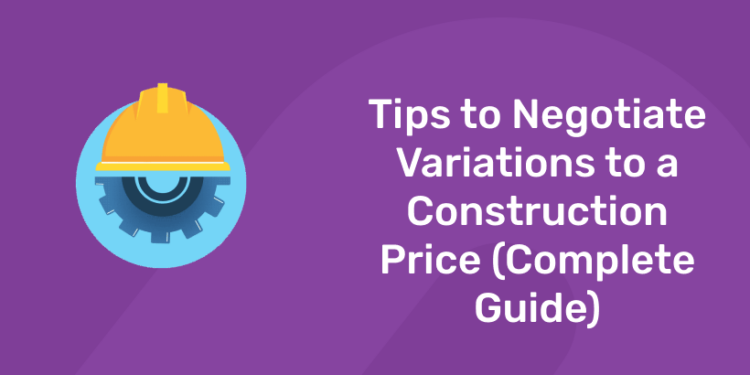Table of Contents
What is a Variation?
In building contracts, variations are changes to the original scope of work or contract that affects the project’s timeline, budget, and quality. These are very common in the building industry. A variation may be requested by either by the contractor or the owner or it may arise out of necessity.
The building contract will include the scope of works to be provided by the contractor. It will be set out in attached specifications, plans, or a service brief. The contract mentions all works for which the contractor will ultimately be liable . This is the basis from which alterations or additions will be classified a variation.
Become a certified Quantity Surveyor! Enroll Here!
Different Types of Variation
1: What is the main purpose of a Bill of Quantities (BoQ)?
The categorization of a variation is important as it affects a contractor’s right to claim additional costs and a principal’s obligation to pay them.
- Variations initiated by the builder: This includes changes requested by the builder due to unforeseen circumstances or changes to the plan.
- Variations initiated by the homeowner: This includes changes requested by the homeowner that are not mentioned in the original contract.
- Additional cost: Changes to the price of materials, labor, and other unexpected costs can cause variations in the cost.
- Additional time: The builder may require additional time to complete the project due to unforeseen circumstances. This can also lead to additional cost.
Master Quantity Surveying – Build a Rewarding Career Today!
Gain in-demand skills in cost estimation, project budgeting, and contract management with our Quantity Surveying Course. Learn from industry experts and boost your career in construction and infrastructure. Enroll now and take the first step toward success!
Know MoreTips to Negotiate Variations to Construction Price
Variations are any changes made to the original agreement between a homeowner and the builder. These changes significantly affect the project’s timeline, cost and quality. Hence it is highly important to follow the process required under the contract and to ensure that the variation is clearly documented.
- The variation clause should be included in the contract from the outset. It should provide clarity on the procedures for requesting and approving variations. It should also include details about how the variation will be paid for.
- A variations request should include a clear description of the proposed variation, the reasons for the variation, and any proposed changes to the cost or timeline of the project.
- Understand the need for the variation. If you have any questions or concerns, clarify them.
- Once you understand the scope of change, you must estimate the cost. You should include all the direct and indirect costs which include labor, materials, equipment, subcontractors, overhead, profit, and contingency.
- You should document the calculations, and provide a breakdown of the cost components to the owner.
- Explain and justify your cost estimate. You should be flexible and open to compromise, but not to the point of sacrificing your profit or quality. If the owner wants to reduce the overhead costs, you can suggest using cheaper materials or reducing the project’s timeline. Try to find a middle ground where both parties benefit.
- You should be careful not to promise anything that you cannot deliver. Set realistic expectations and be honest about the timeline and the cost.
- Use relevant industry statistics to show that your proposed pricing is competitive.
- Make sure to put the final agreement in writing, and also ensure that it specifies the scope, cost, schedule, and a dispute resolution plan in case of disagreements.
- Manage the change effectively by monitoring the tasks and resources used. If any changes occur during the execution of the change order, report them to the owner and other relevant parties. Obtain the owner’s approval and feedback to continue with the change.
Become a certified Quantity Surveyor! Enroll Here!
Negotiating variations to a contract can be a challenging process. Building a good relationship with the owner goes a long way in dealing with this process. It is just as important as making a profit from the project.























